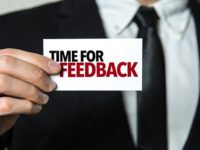Within a highly competitive marketplace, organisations are increasingly trying to improve the employee experience. However, experiences are inherently individual, depending on a multitude of factors including career stage and level of motivation. It’s therefore impossible for businesses to implement a one-size-fits-all employee experience program that successfully reaches and engages all employees. Instead, businesses need to seek continuous feedback and integration of data across multiple channels so they can understand, track, measure, and affect their employee’s experiences.
There are three key areas that organisations need to focus on to improve the employee experience:
1. Being proactive vs. reactive
It’s not enough to survey employees once a year or even bi-annually. Organisations wanting to stay ahead should be proactive, not reactive. Use an employee experience management tool that has functionality to not only send and analyse pulse surveys but also has the capability to be integrated with other every day employee systems and tools. This will give you greater visibility of your employees experiences. A continuous listening program lets organisations gather feedback both directly from employees and indirectly based on how employees speak about the company to others and how they behave.
2. Being transparent and data sharing
Employees are affected by different departments so it’s important to share the feedback data across those departments so changes can occur holistically and strategically, rather than be confined to the department the employee works in.
The way employees perceive the organisation’s ability and willingness to collaborate can significantly affect the employee experience. For example, a manager may be responsive and agile but decisions held back by a different department can mean the employee won’t have a positive overall experience. Sharing feedback data across all departments helps ensure the organisation develops consistently and along the same lines.
A good example of how organisations can provide more visibility is through real-time dashboards. This allows managers, employees and senior management to not only visualise the data but also drill into the insights that will allow them to make informed decisions and actions.
3. Having the right tools for the job
A flexible collection engine is a necessary base. Different types of employee feedback tools provide different types of insights. For actionable insights across the employee lifecycle, you need a tool that includes:
- Automated real-time and role-based dashboarding and reporting.
- The ability to conduct pulse and ad hoc surveys on issues of current interest.
- Sampling and distribution optimisation.
- Longitudinal tracking to discover long-term performance trends.
Advances in HR technology, including the use of analytics, has allowed organisations to eliminate organisational blind spots and identify key themes and emerging issues across the entire employee lifecycle. Greater access to data has allowed feedback to be displayed in real-time, demonstrating the return on investment for the business.
Employee experiences need to be data-driven to be successful. When organisations use analytics pro-actively, leveraging the right tools and share it with their team, they are able to deliver great experiences that engage employees, drive performance and productivity, and speed processes—ultimately reducing the cost of HR and increasing the effectiveness of people initiatives.
A great employee experience delivers ongoing opportunities for learning, development, and progression, which in turn increase employees’ contributions to the company. All of them together lengthen the amount of time each employee stays with the company in an engaged, productive state. Perhaps the most compelling argument for great employee experience is that you lose money when you have to replace good employees. You lose even more money when you lose a good hire that you have developed into a high performing employee.
Steve Bennetts, Subject Matter Expert – Employee Experience, Qualtrics













